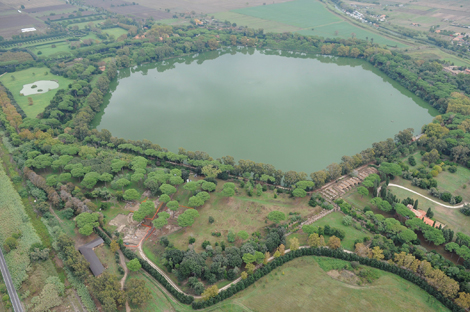Trajanic Period
Under the emperors Trajan and Hadrian, probably between AD 112/114-120, the existing harbour was enlarged with the establishment of a hexagonal basin a short distance to the east of the earlier Claudian basin. It was surrounded by a number of major new buildings, including a temple and precinct, the Palazzo Imperiale and associated administrative buildings, a possible imperial navalia and many warehouses. Our excavations and geophysical survey on the central isthmus have focused upon three of these buildings, which occupy one whole side of the hexagonal basin. They show that the Palazzo Imperiale (Buildings 1, 2, 3 and 8) was a three storey imperial maritime villa covering 2 hectares that was used for periodic visits by the emperor and also by imperial officials working for the praefectus annonae. The first-floor rooms of Building 8 were built around a peristyle with high quality mosaic floors, and many high quality sculptures are known to have come from the complex. Furthermore, lying immediately to its east was a building that has been identified as a massive imperial navalia, or shipshed (Building 5). This comprised a number of vaulted bays which probably sheltered ships used on behalf of the emperor and the officials. Both buildings stood to a height of c. 19m, visually dominating both the Trajanic and Claudian basins and providing the principal points of reference for ships mving through the harbours. Immediately adjacent to the latter was a small building of uncertain function (Building 7). This enlarged port complex was connected both to the Tiber by one new canal, the Canale Romano, and to Rome by an extension of the Via Campana/ Portuensis. Similarly, the connection between Portus and Ostia was enhanced via the addition of another new canal heading southwards across the Isola Sacra.

